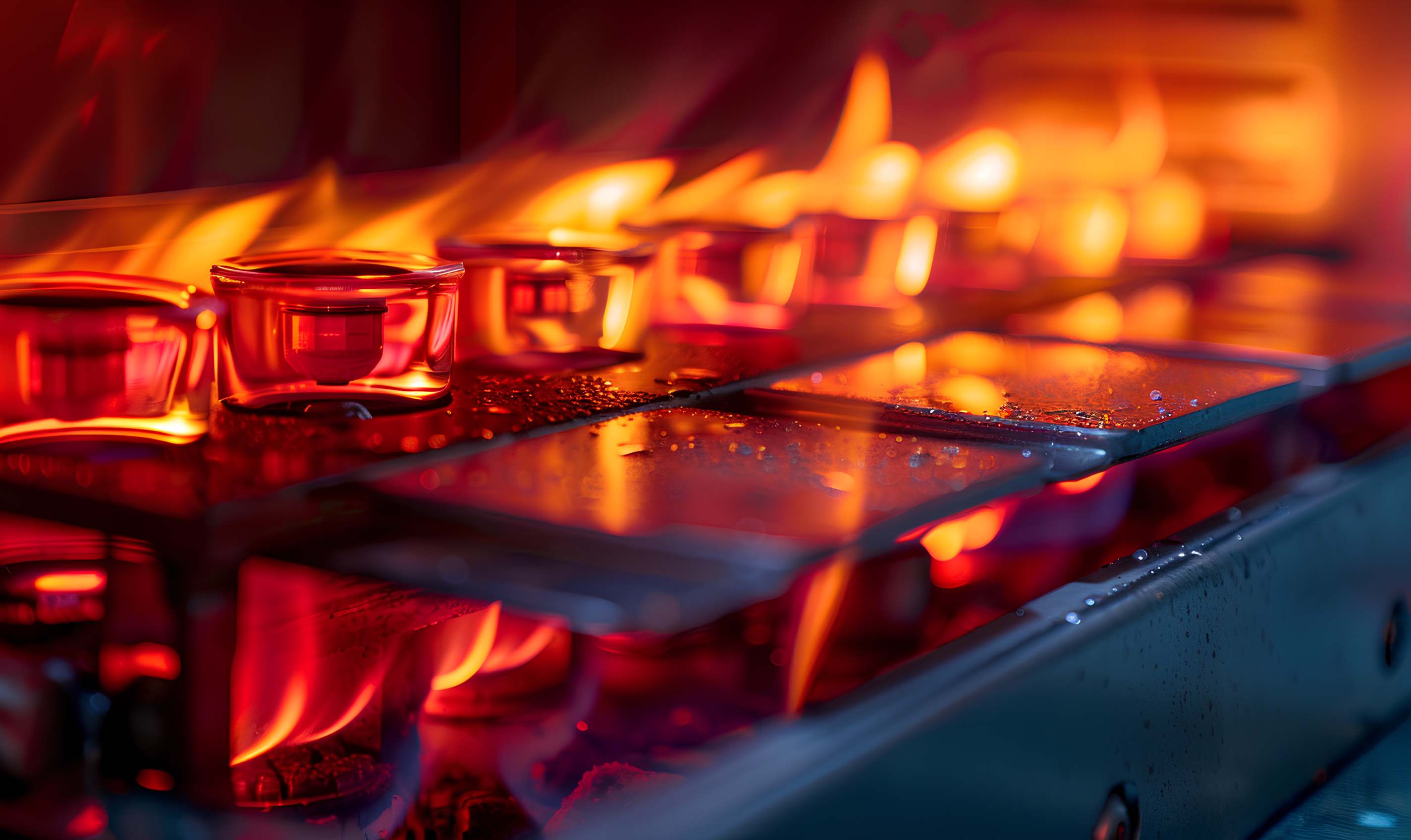




























MTT's thermal analysis engineers have excellent practical experience and a wealth of case accumulations. Meanwhile, MTT has a professional thermal analysis laboratory and sophisticated thermal analysis instruments and equipment, providing you with comprehensive, high-quality and convenient testing services.

| Project Overview
It is a technology that measures the physical properties of substances as they change with temperature under programmed temperature control.
It studies the properties and changes of substances or identifies and classifies substances by measuring the changes in physical properties during the heating or cooling process of substances. Physical properties include the mass, temperature, enthalpy, size, mechanical, acoustic, electrical and magnetic properties of substances.
| Test Objective
Material thermal analysis can quickly and accurately measure changes such as crystal form transformation, melting, sublimation, adsorption, dehydration and decomposition of substances, and has a wide range of applications in characterizing the thermal, physical, mechanical properties and stability of materials.
It is of great practical significance for the research on the physical and chemical properties of inorganic, organic and polymer materials and the quality control in the production of related materials.
| Test Methods
Commonly used material thermal analysis techniques
There are a wide variety of thermal analysis methods. According to the induction and classification of the International Confederation for Thermal Analysis and Calorimetry (ICTA), there are currently nine categories and seventeen types of thermal analysis methods. Among these thermal analysis techniques, differential scanning calorimetry, thermogravimetric analysis, thermomechanical analysis, dynamic thermomechanical analysis and thermal conductivity testing are the most widely used.
① Differential scanning calorimetry analysis (DSC analysis)
During the temperature change process (heating/cooling/isothermal), measure the change in the heat flow difference between the sample and the reference material.
Using a DSC, we can study the melting and crystallization processes, crystallinity, glass transition, phase transition, liquid crystal transition, oxidation stability (oxidation induction time O.I.T.), reaction temperature and reaction enthalpy of materials, measure the specific heat and purity of substances, study the compatibility of polymer blends, the curing process of thermosetting resins, and conduct reaction kinetics research, etc.
② Thermogravimetric analysis (TGA)
During the temperature change process (heating/cooling/isothermal), measure the change in the weight of the sample with temperature or time.
Using thermogravimetric analysis, we can determine the stability and oxidation stability of materials under different atmospheres, analyze physical and chemical processes such as decomposition, adsorption, desorption, oxidation, and reduction (including further conducting apparent reaction kinetics research using TG test results), perform quantitative calculations of the composition of substances, and determine the contents of moisture, volatile components, and various additives and fillers.
③ Thermomechanical analysis (TMA)
The basic principle of this technique is to measure the deformation of the sample during a certain load and temperature program (heating/cooling/isothermal and their combinations).
The following characteristics of materials can be studied using a thermomechanical analyzer:
Linear expansion and contraction
Glass transition temperature
Densification and sintering processes
Optimization of heat treatment processes
Softening point detection
Phase transition process
Research on reaction kinetics
④ Dynamic thermomechanical analysis (DMA)
Place the sample under a programmatically controlled temperature and apply a single-frequency or multi-frequency oscillatory force to study the mechanical behavior of the sample and measure the functional relationships of its storage modulus, loss modulus, and loss factor with temperature, time, and the frequency of the force.
Widely used in the fields of thermoplastics and thermosetting plastics, rubbers, coatings, metals and alloys, inorganic materials, composite materials, etc.
⑤ Thermal conductivity test
1. Steady-state heat flow method
Suitable for testing the equivalent thermal conductivity and thermal impedance of homogeneous and non-homogeneous thermally conductive and electrically insulating thermal interface materials.
2. Laser flash method (LFA)
This method is a non-contact and non-destructive measurement technique. It can not only directly measure the thermal diffusivity accurately, but also calculate the thermal conductivity by multiplying the specific heat capacity and density of the sample.
| Test Items
|
Parameter |
Test method |
Temperature range |
|
熔点、熔融热焓、结晶温度、结晶热焓 Melting point, enthalpy of fusion, crystallization temperature, enthalpy of crystallization |
差示扫描量热分析 DSC Differential scanning calorimetry analysis DSC |
-100℃~550℃ -100°C~550°C |
|
比热容 Specific Heat Capacity |
差示扫描量热分析 DSC Differential scanning calorimetry analysis DSC |
-100℃~550℃ -100°C~550°C |
|
玻璃化转变温度 Glass transition temperature |
差示扫描量热分析 DSC Differential scanning calorimetry analysis DSC |
-100℃~400℃ -100°C~400°C |
|
热机械分析 TMA Thermomechanical analysis TMA |
-100℃~400℃ -100°C~400°C |
|
|
动态热机械分析 DMA Dynamic thermomechanical analysis DMA |
-100℃~400℃ -100°C~400°C |
|
|
热裂解温度 Thermal cracking temperature |
热重分析 TGA Thermogravimetric analysis TGA |
室温~800℃ Room temperature~800°C |
|
热膨胀系数 Thermal expansion coefficient |
热机械分析 TMA Thermomechanical analysis TMA |
-100℃~900℃ -100°C~900°C |
|
爆板时间 Delamination time |
热机械分析 TMA Thermomechanical analysis TMA |
室温~300℃ Room temperature~300°C |
| MTT Advantages
1. Professional Team: A team of highly experienced testing engineers and technical experts.
2. Advanced Equipment: Equipped with internationally leading testing instruments to ensure accuracy and reliability of results.
3. Efficient Service: Rapidly respond to customer needs and provide one-stop, high-efficiency inspection services.
4. Authoritative Certification: The laboratory is certified by ISO/IEC 17025, ensuring that test reports have international credibility.